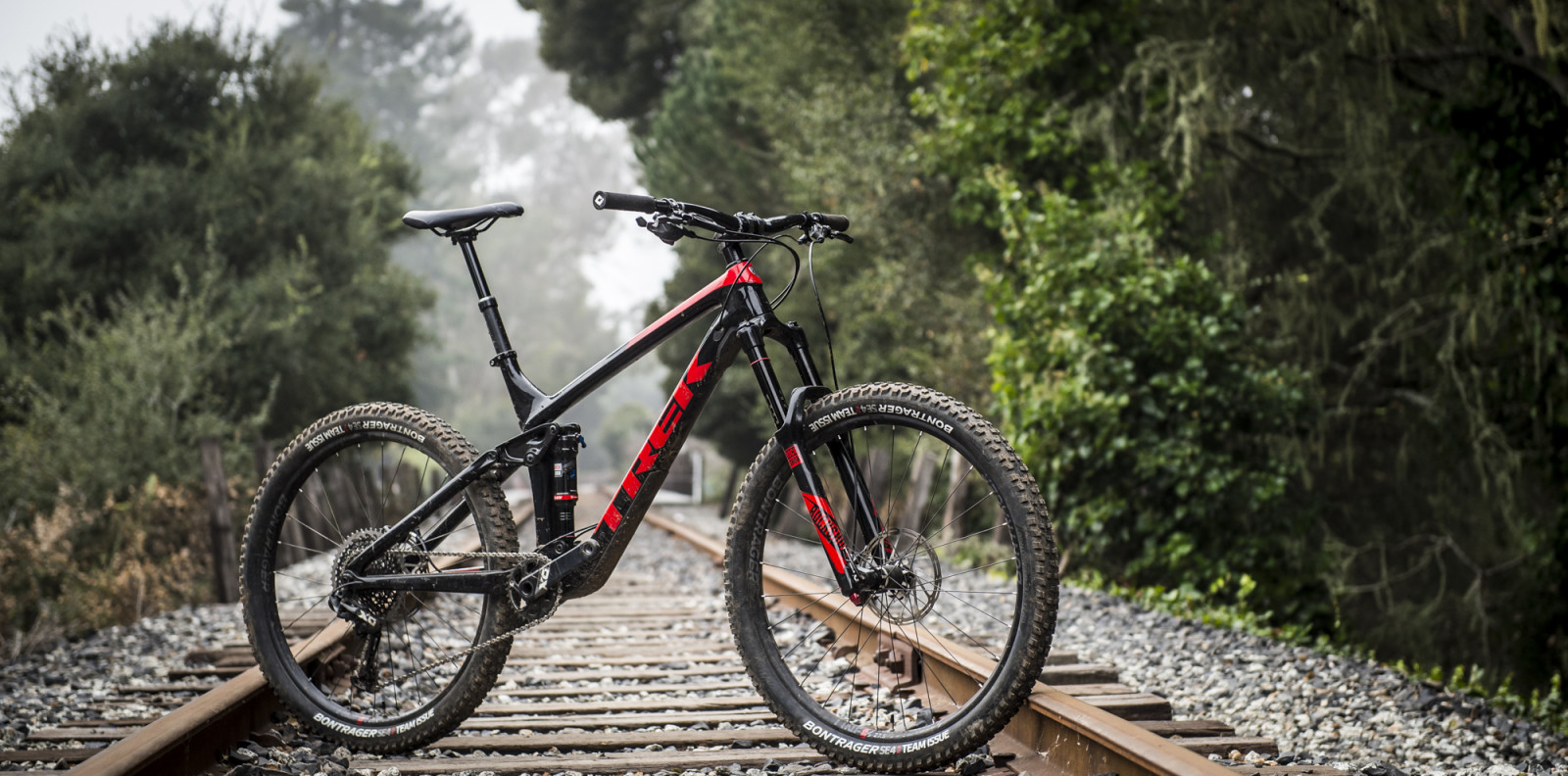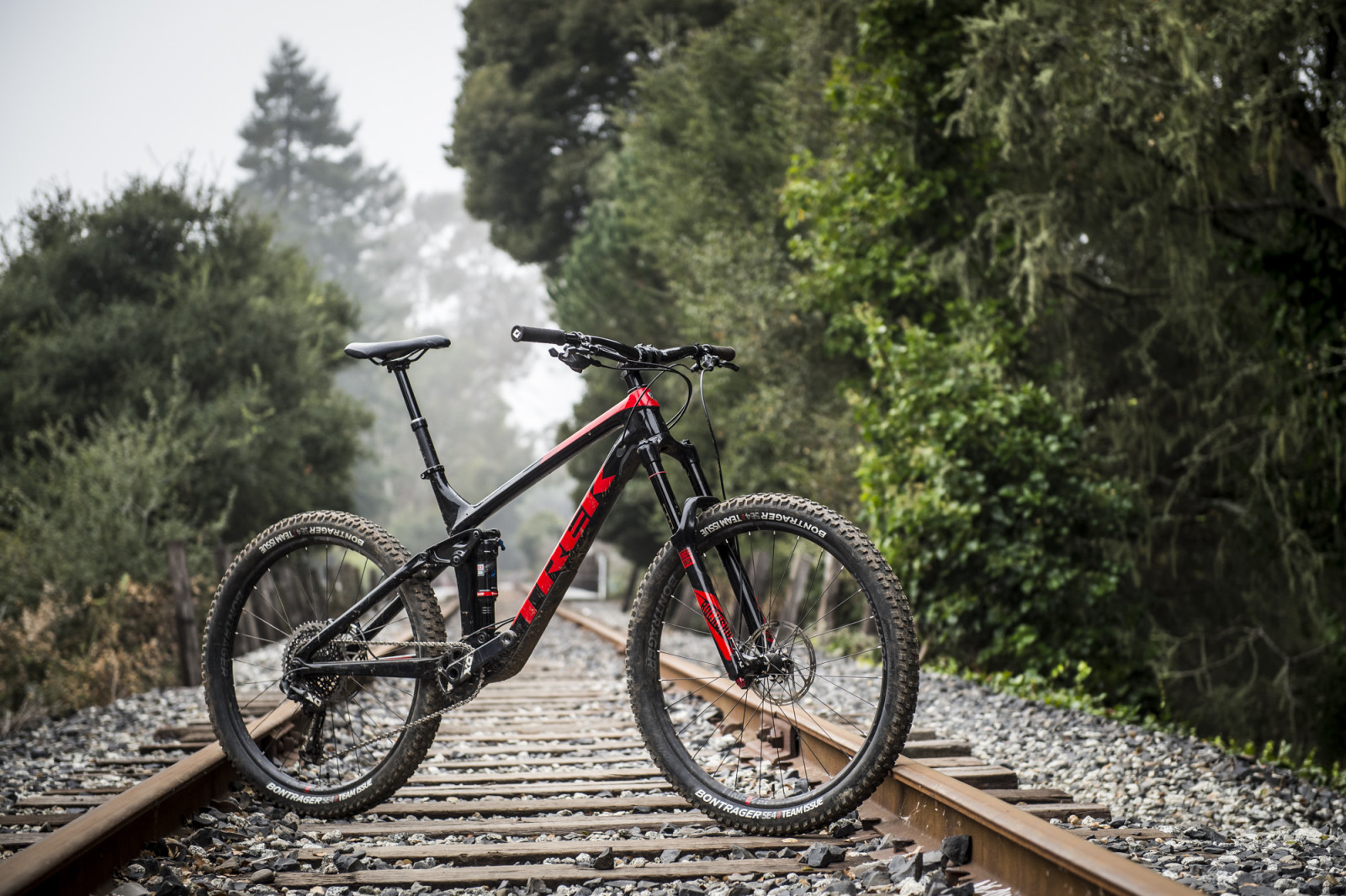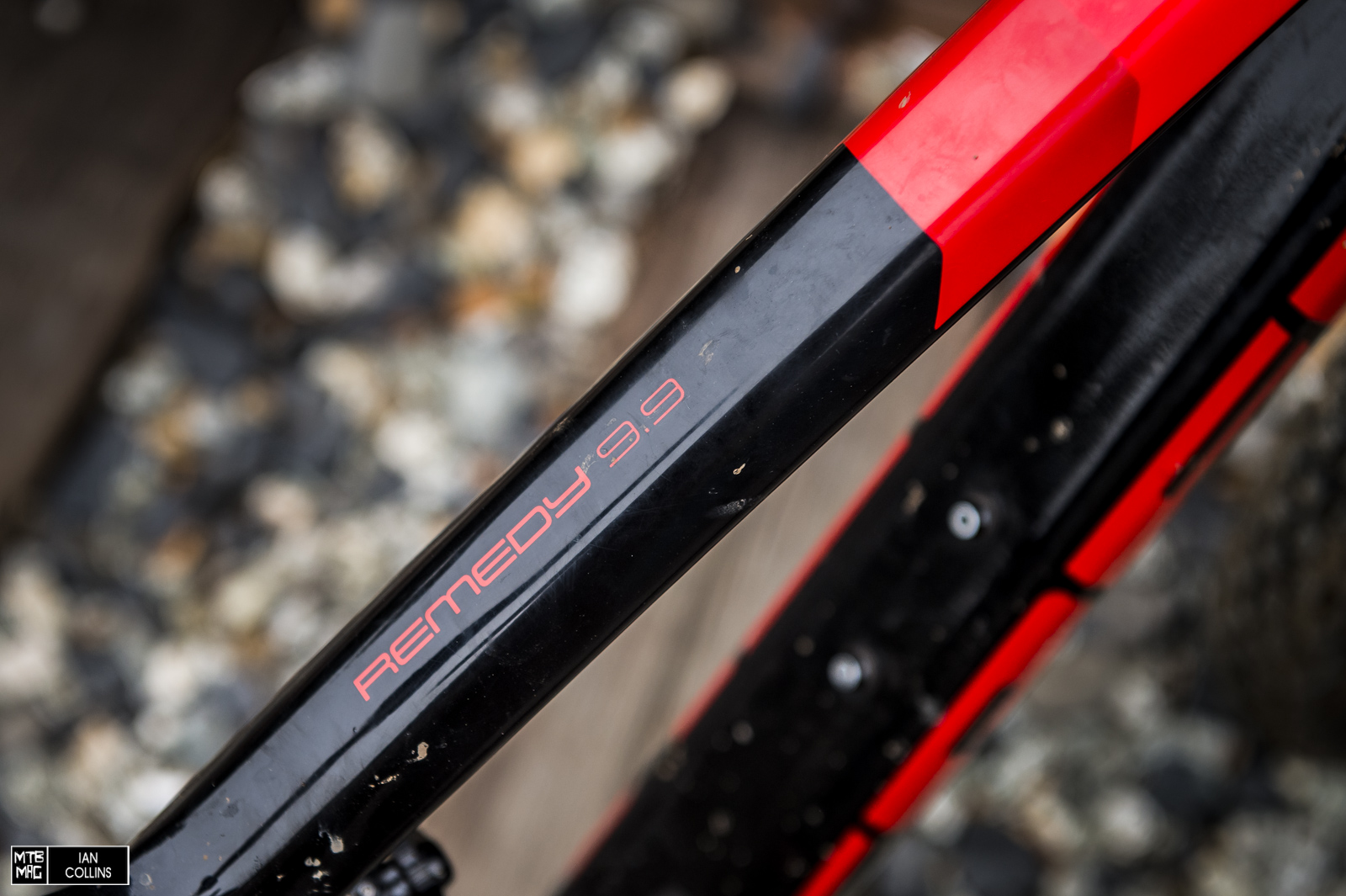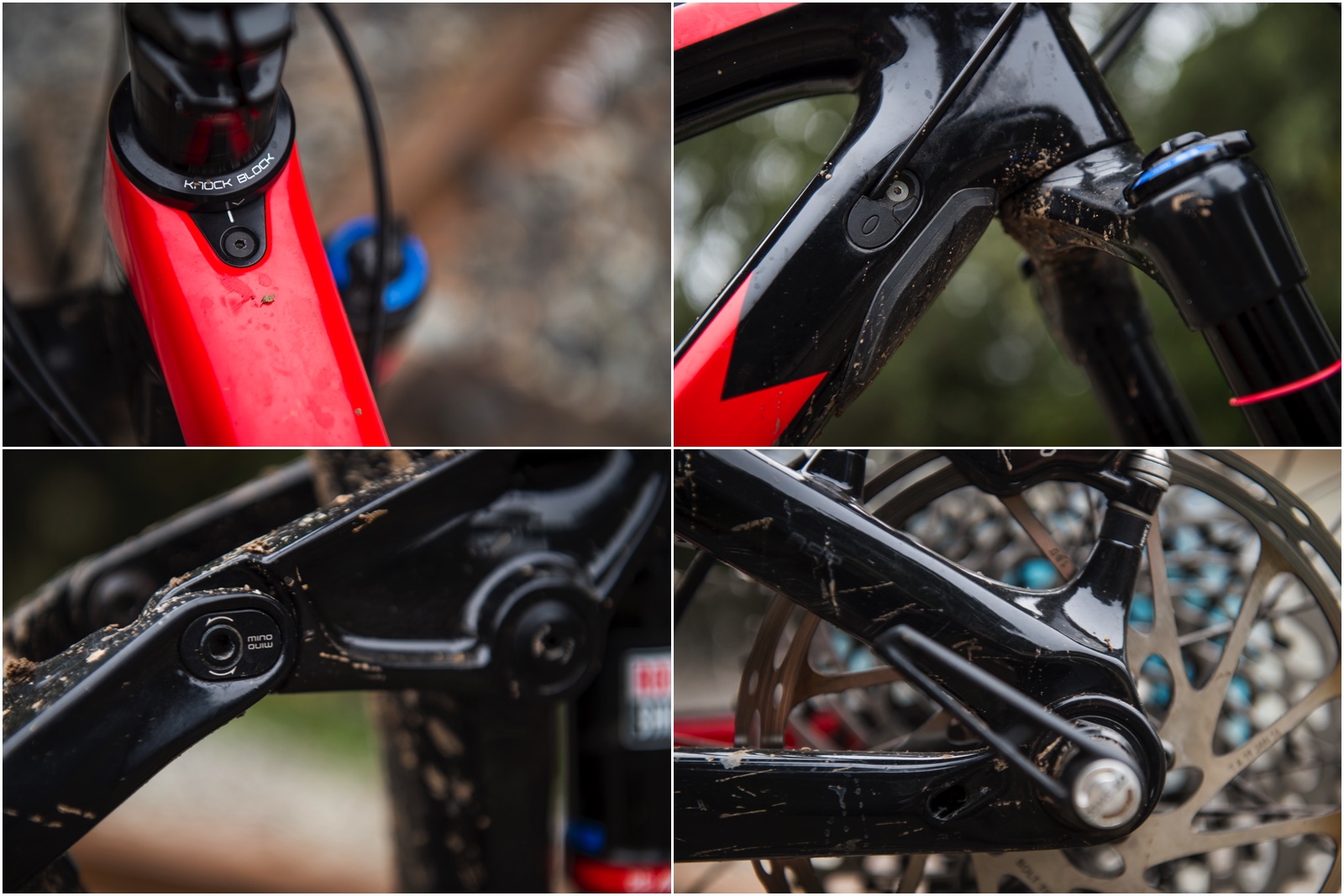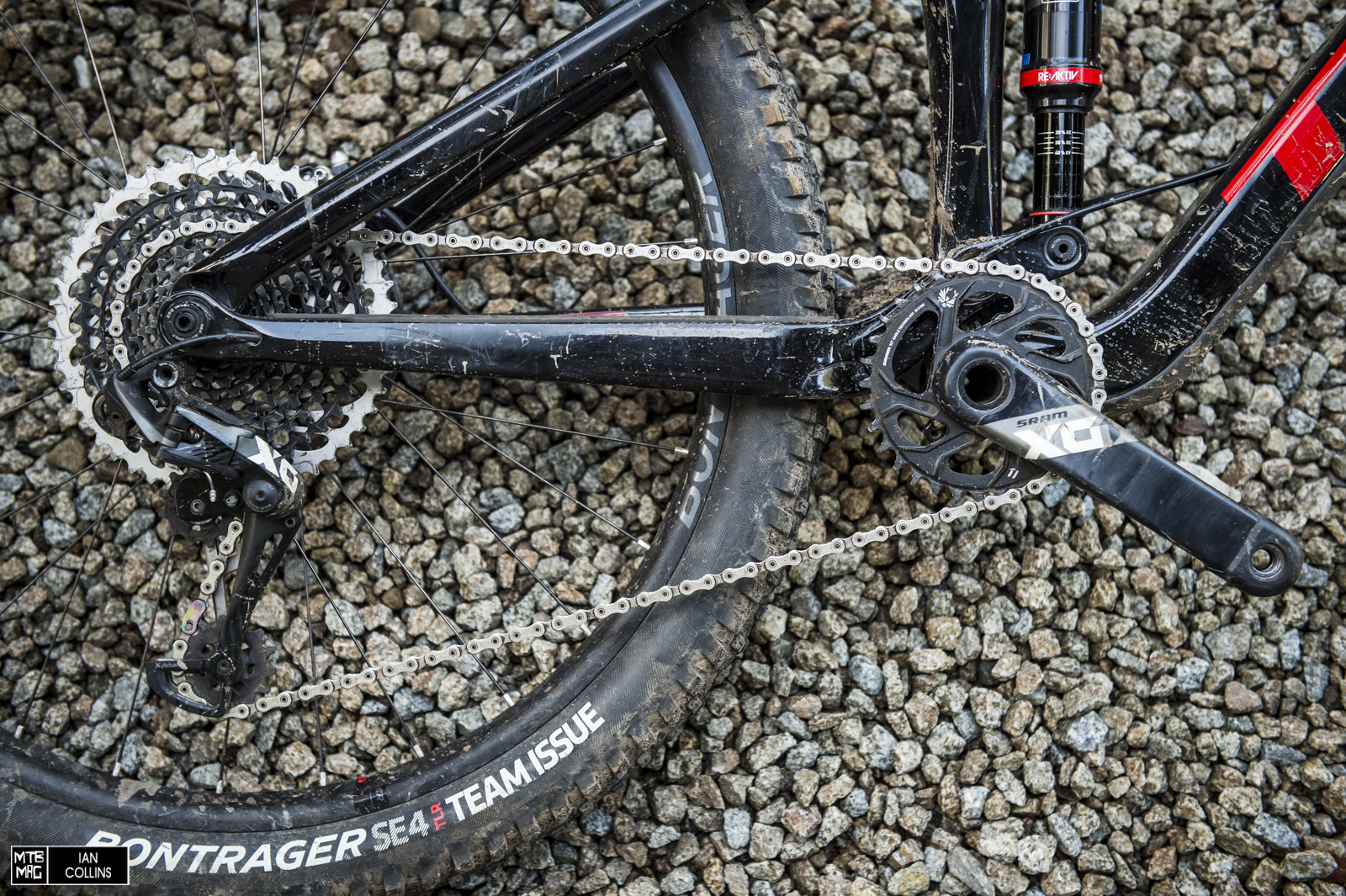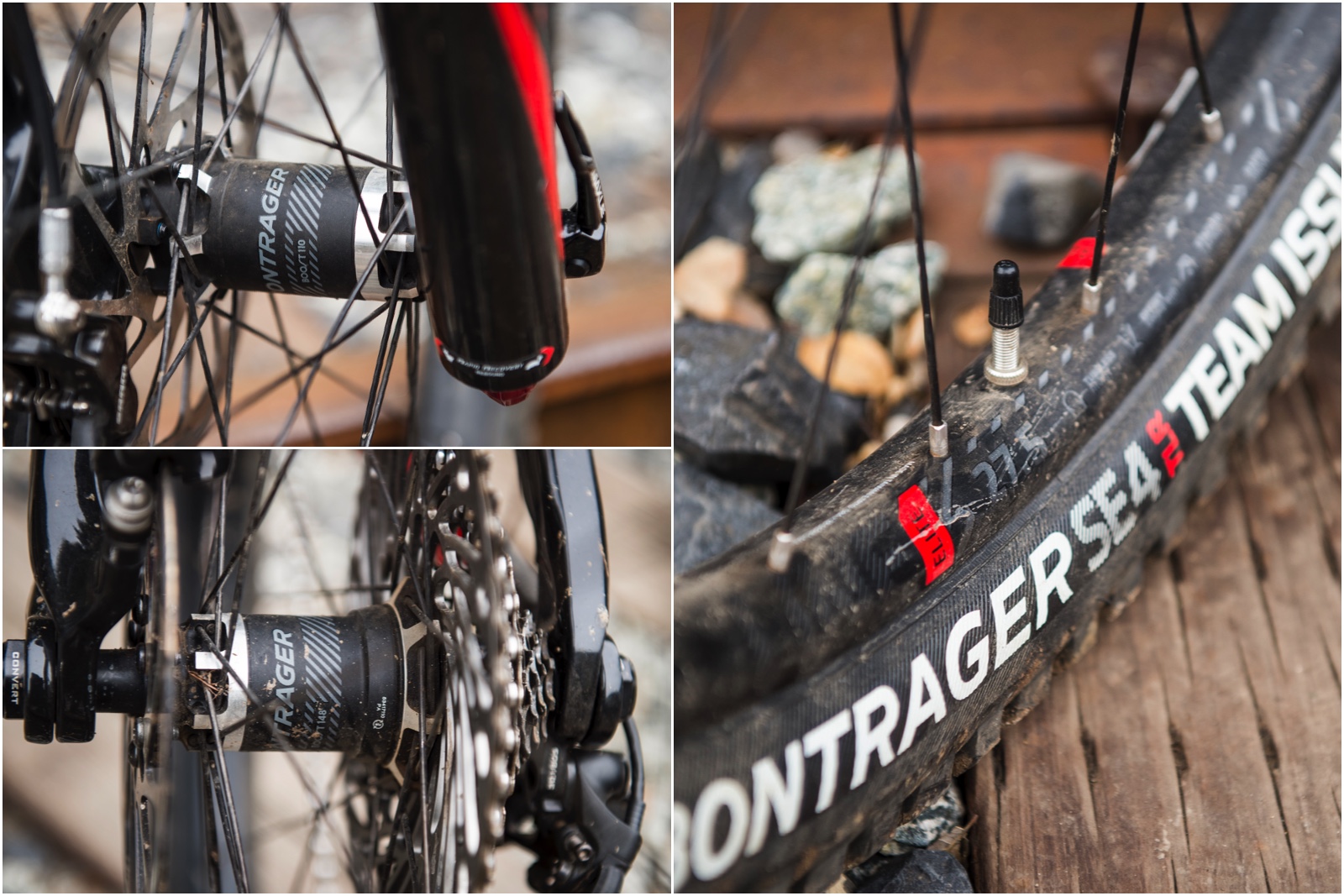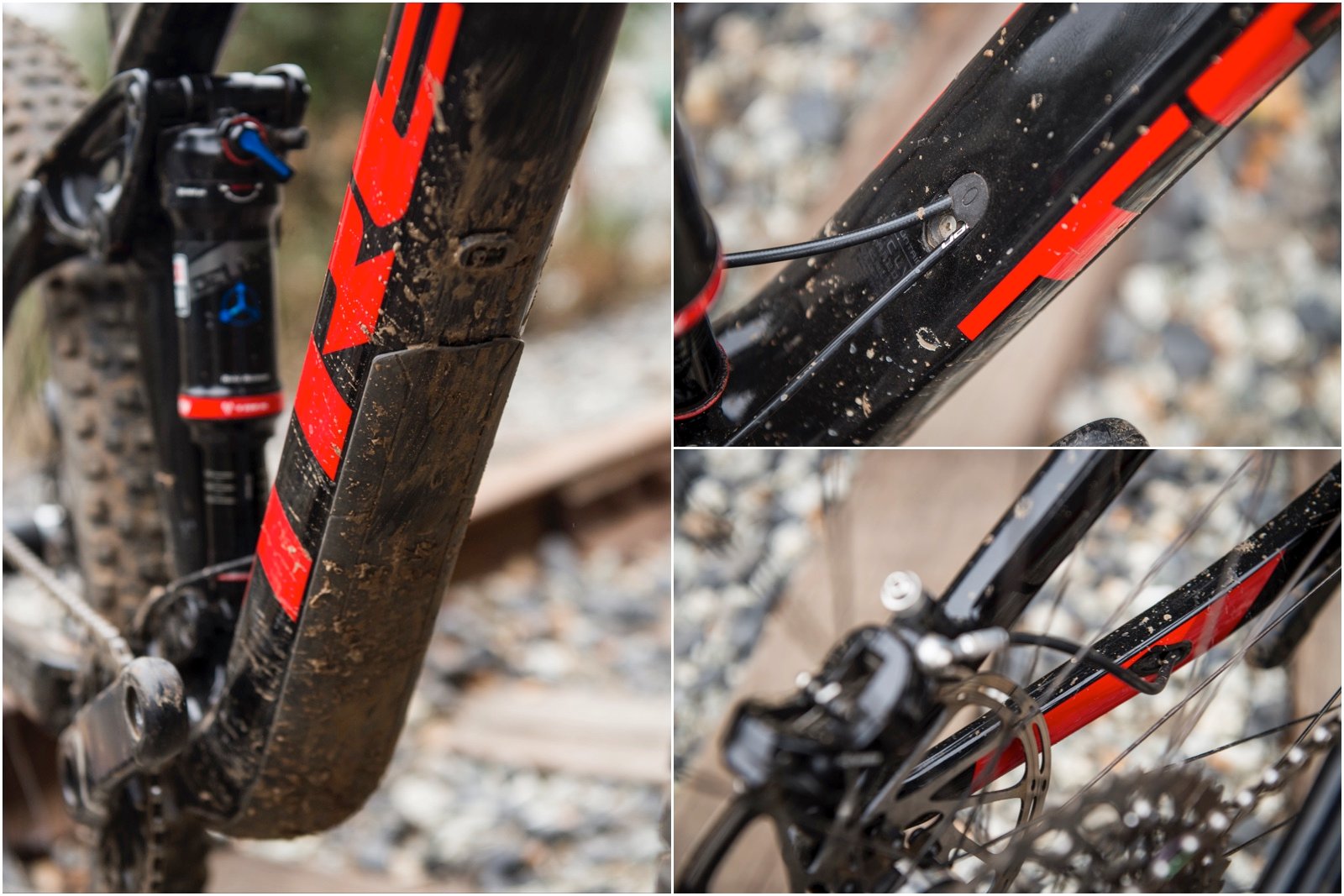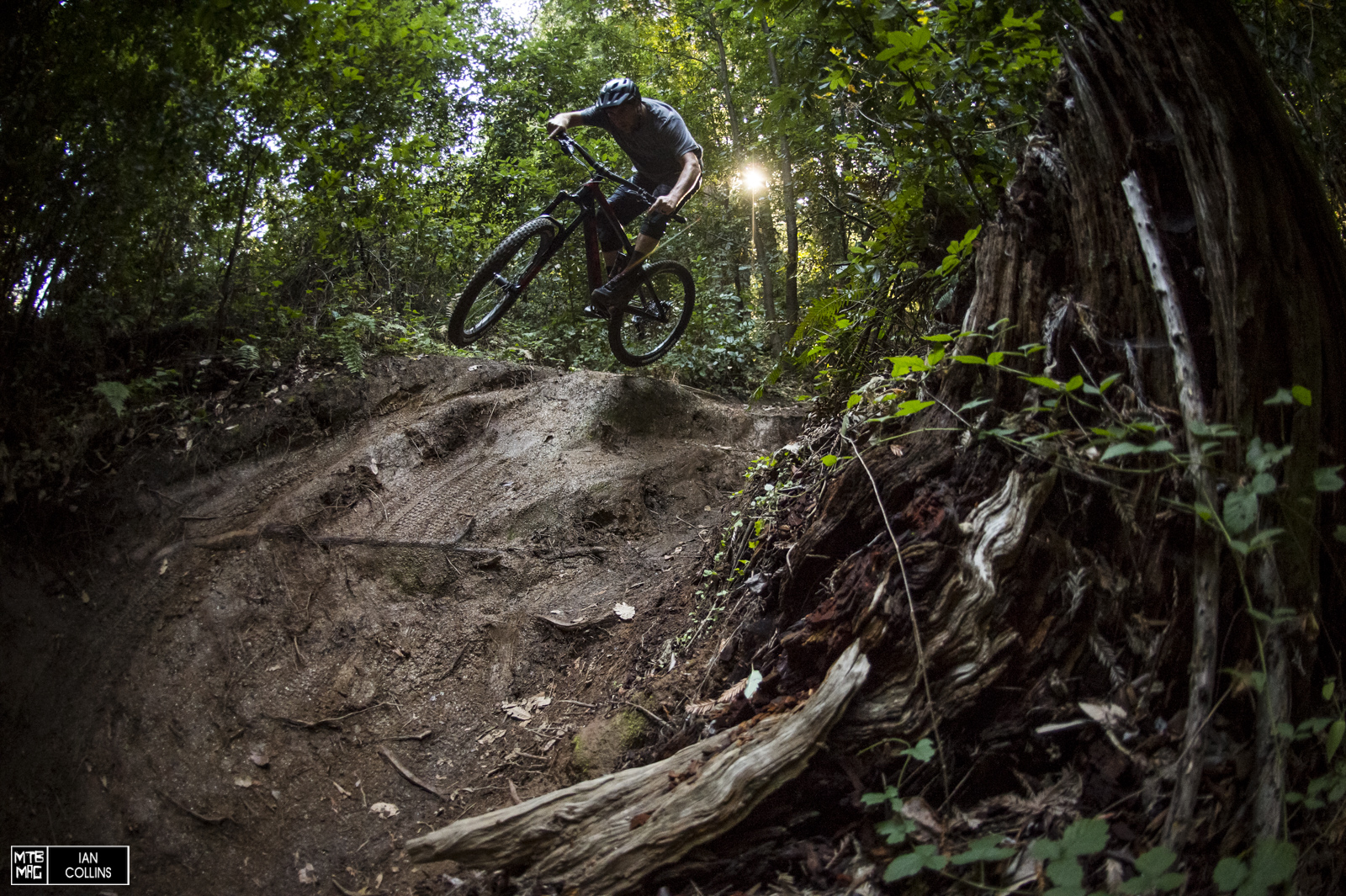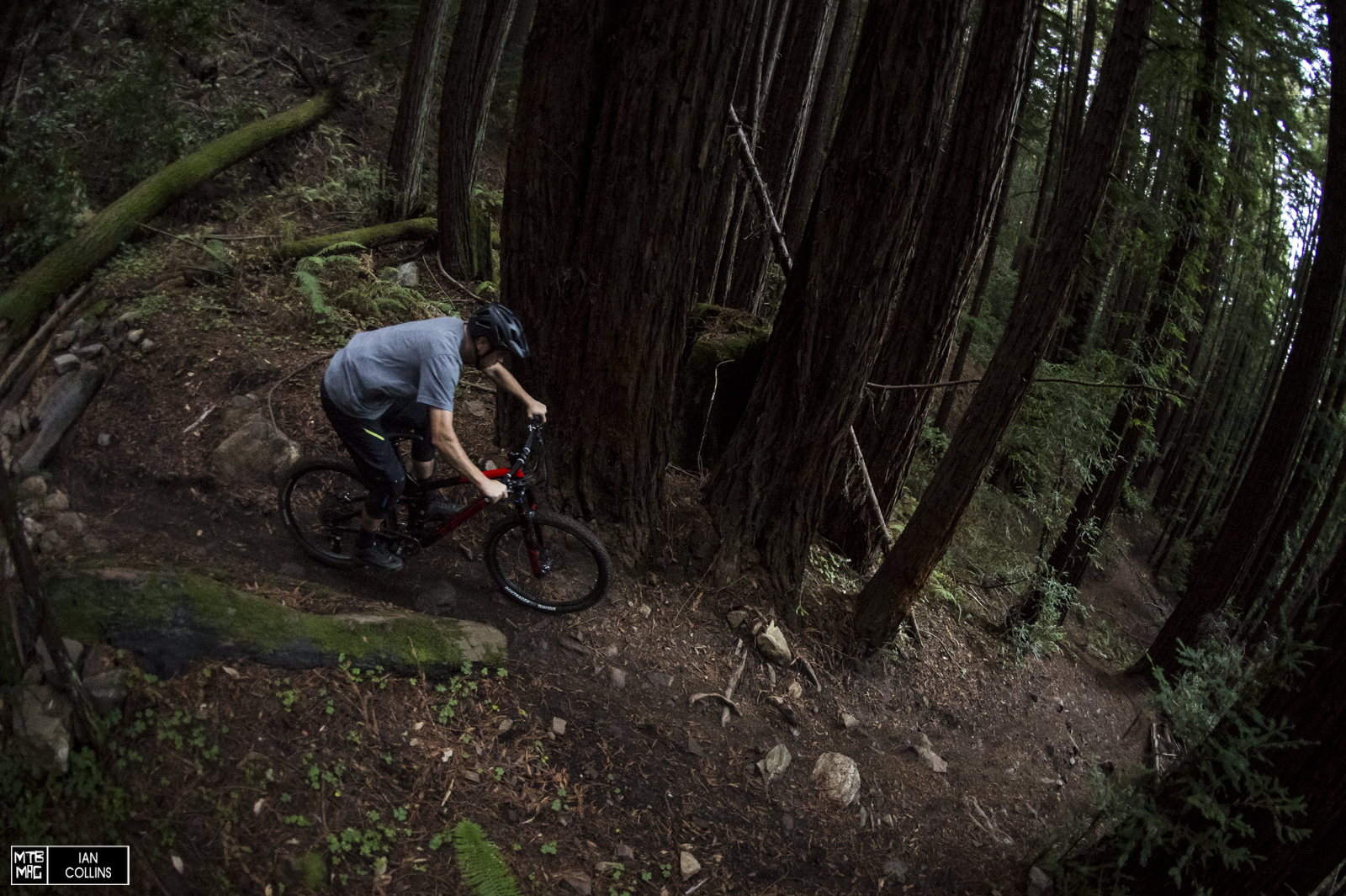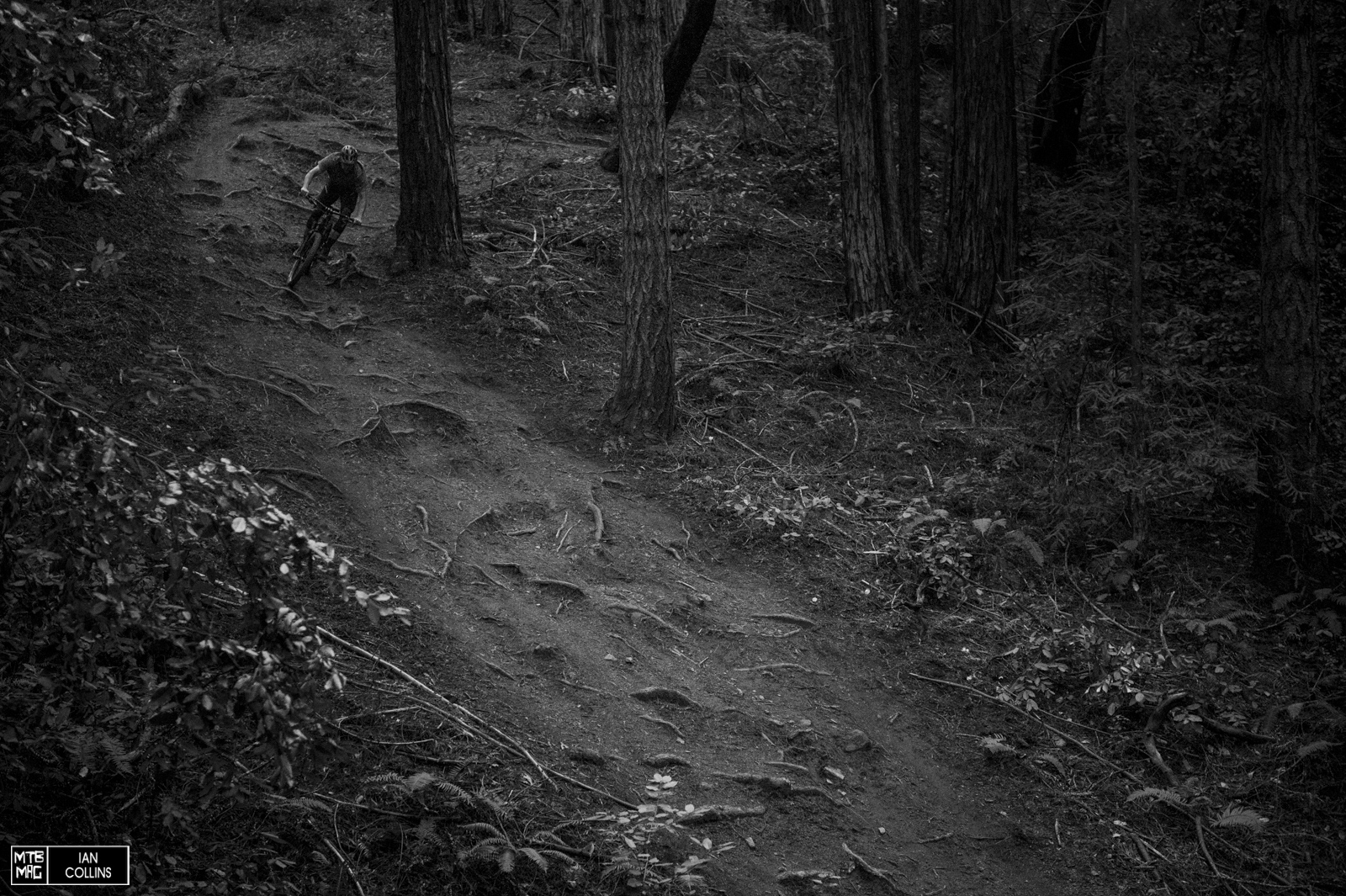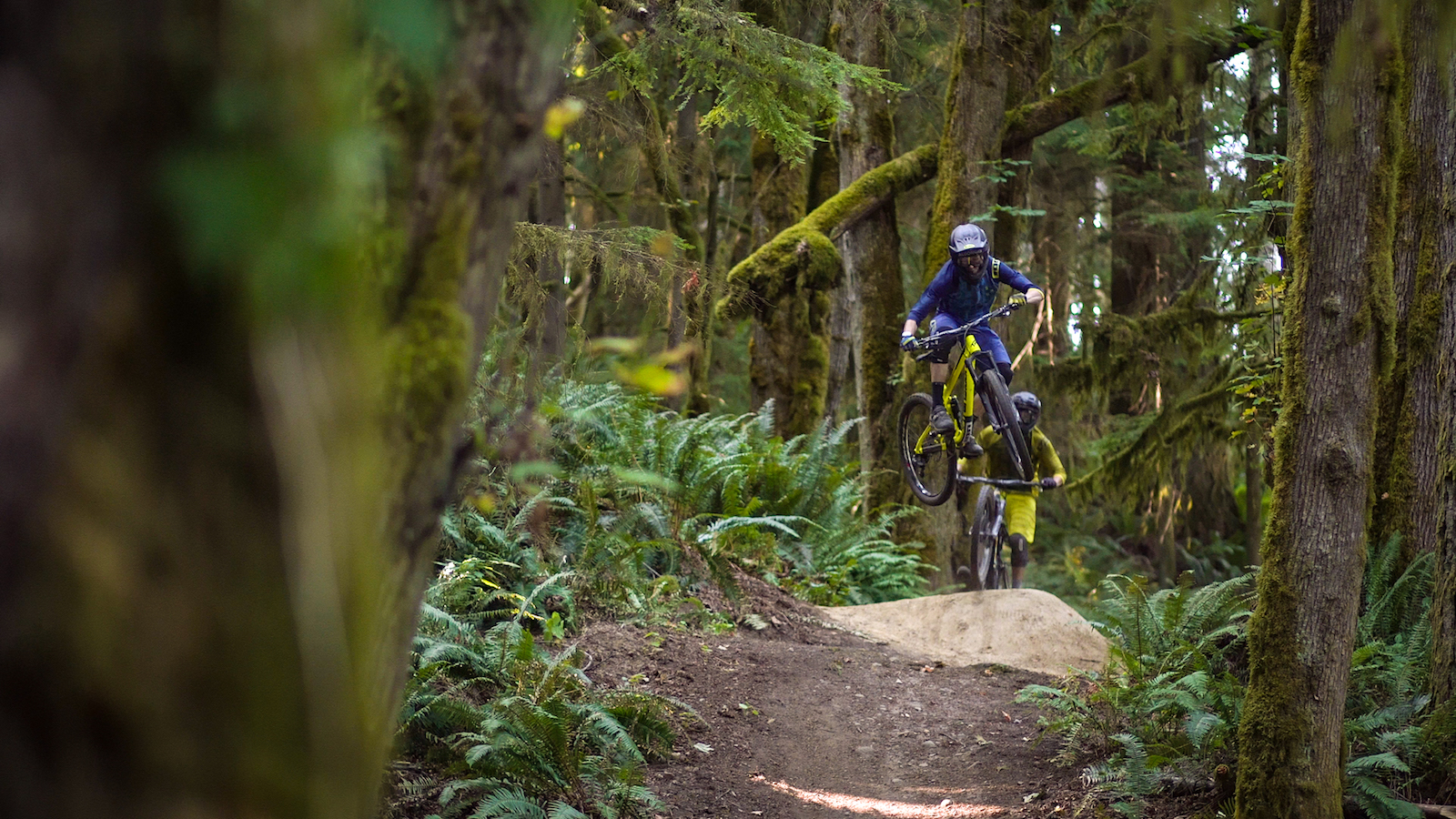[ad3]
Last year Trek enjoyed a great deal of glowing reviews from media, praise from consumers and general success with both their Remedy 29″ and Slash 27.5″ models. Since they don’t tend to rest on their laurels, this year they made some pretty drastic and surprising changes to both models by effectively swapping their wheel sizes and outfitting the Fuel EX with a more aggressive geometry set. Trek also gave Fuel EX the ability to run either 27.5″ Plus tires or standard 29″ tires; at 130mm of travel it started to encroach on the old 29″ Remedy’s turf. With 150mm of travel, medium wheels and fairly aggressive geometry the new Remedy has moved into old Slash territory. Lastly, the new Slash has turned into a bike that is squarely aimed at the rigors of Enduro racing. It’s got 29″ wheels, super slack geometry and a frame that’s stiffer than their DH bike, at least on paper anyway. Phew. Now let’s talk about what really matters…our last few months spent on the new Remedy.
Details
Weight – 27.80 lbs(17.5″)
Travel – 130 to 160mm front / 150mm rear
Hub Spacing – Boost 148/110
ABP – Active Braking Pivot
Full Floater linkage
Mino Link adjustable geometry
RockShox Deluxe rear shock w/RE:aktiv
$7,999.99(US)
Five Sizes – 15.5,17.5,18.5,19.5(tested),21.5
Geometry
Trek chose a careful mix of numbers for the Remedy. A 65º head angle allows it to tackle rowdy terrain without flinching, yet a 74.1º effective seat angle help to keep your weight forward on the tougher climbs. Out back, short 433mm chain stays keep it light on its feet. One of our favorite features from Trek is the Mino Link, allowing for two different geometry settings that are vastly far apart. One geometry set has a steeper head angle and a higher bottom bracket; conversely the other has a slacker HA and lower BB. It only takes about 2 minutes to swap between the two settings with a 5mm allen key. This allows the bike to comfortably suit a broader range of riders on their given terrain.
Overview
Perhaps the most audible news with the updated line of Trek trail bikes is “Knock Block”, a steering lock which was implemented when designers went to a massively oversized straight down tube. Knock block was born out of necessity as the massive new “Straight Shot” downtube featured on Remedy, Slash and Fuel EX protrude enough that the fork crown hits it once you turn the handlebar past 75º or so. The main reason for switching to a straight, oversized downtube is stiffness according to Trek’s designers; it also saves a some weight. Other key frame features are “Mino Link” providing adjustable head angle/BB height and ABP(advanced brake pivot) which ensures that the suspension remains supple and active under braking.
The travel adjust Lyrik RCT3 allows you to drop the travel from 160mm to 130mm to get the from end down for the steep climbs. You can also use “bottomless tokens” (read : volume reducers) to fine tune your air spring curve and hone in on a more linear rate or a more progressive rate should you choose. Out back the new metric sized RockShox Deluxe is one of(if not, the) best air sprung shocks we’ve used to date. Trek’s proprietary Re:Aktiv technology keeps it even more under control and requires less fussing with the lockout.
SRAM Eagle X01 drive train. 1X with 500% range. Unlike the hop up kits, you can always find a perfect cadence and there aren’t any freakishly huge jumps from gear to gear.
The Remedy is outiftted with a full Bontrager cockpit starting up front with their 35mm bar stem combo and out back it features their new Fall Line dropper post with a left side underbar 1X style lever to control 125mm of travel. The saddle and grips are also in house Bontrager bits.
The Bontrager Line Elite wheelset has Boost spacing, straight pull spokes and an asymmetrical rim profile.
Clockwise, right to left are some other notable frame features : A downtube guard. Internal cable/hose routings that actually stay quiet. The chainstay has two different brake hose routings – one for SRAM brakes and one for Shimano. Both are quite slick and well thought out.
On the Trail
We first threw a leg over the Remedy 9.9 Race Shop Limited back in the middle of June at its launch in Squamish. After a really good initial impression, we reached out to Trek for a long term review and they obliged. Remedy is the go anywhere, do anything bike in Trek’s line. It always has been. It’s hard to put a finger on exactly what attribute we noticed first on the new bike, but 3 characteristics resonated immediately. This bike is stiff, supple and silent.
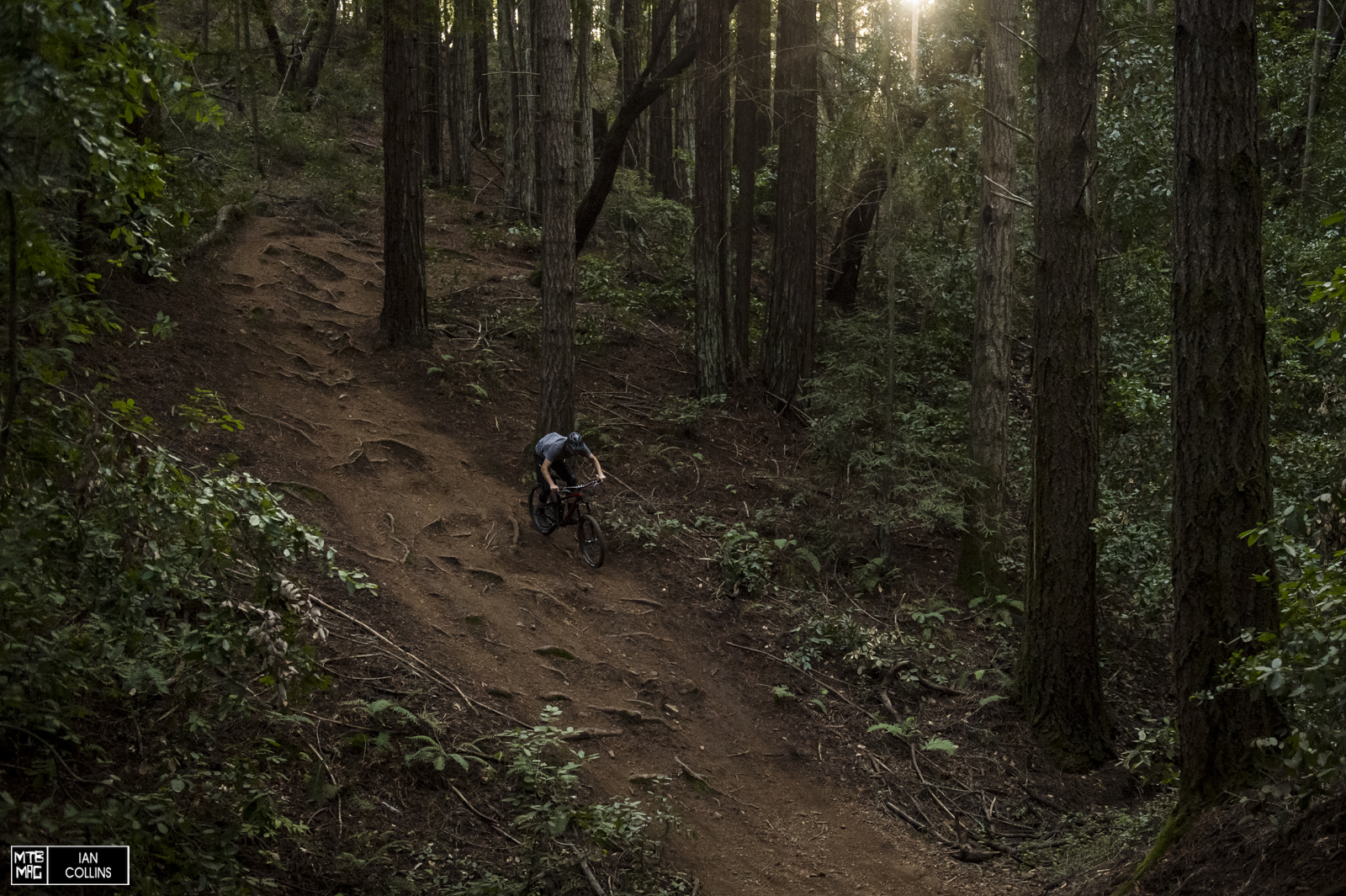 Our 6 foot tall tester felt right at home on the 19.5″ frame. Something often overlooked is the praise due to Trek for making their bikes in 5 sizes, not just 3 or 4 like most brands. This allows us riders to really get a perfect fit without having to compromise. We appreciated the fairly roomy top tube paired with a 50mm stem offering up quick steering. The fairly short 433mm(17″) chain stays keep it easy to manual and snap the bike around turns without being so short that it would compromise stability in rowdy terrain.
Our 6 foot tall tester felt right at home on the 19.5″ frame. Something often overlooked is the praise due to Trek for making their bikes in 5 sizes, not just 3 or 4 like most brands. This allows us riders to really get a perfect fit without having to compromise. We appreciated the fairly roomy top tube paired with a 50mm stem offering up quick steering. The fairly short 433mm(17″) chain stays keep it easy to manual and snap the bike around turns without being so short that it would compromise stability in rowdy terrain.
We set the Remedy up with our “go to” 20% sag up front and 30% sag out back; we put the 2.4″ wide tires in the mid to upper 20’s for PSI. Although we dabbled with volume reducers front and rear, we ended up running 2 on both ends for most of the test. As far as suspension is concerned, up front the Lyrik was fantastic in providing supple action and a stiff chassis with lots of adjustability. On the long, steep climbs we appreciated the travel adjust feature, but do think the Solo Air units are slightly better all out performers. One thing we did love is the fact that these new travel adjust RockShox forks can now take advantage of “bottomless tokens”…in years past, they couldn’t.
Out back our expectations were blown away. We’re not sure exactly what to attribute the incredible rear suspension to…Re:Aktiv, the new metric RockShox Deluxe, or the frame’s kinematics? In all likelihood, it’s harmonious combination of all three. What was so good about it? Somehow, it’s a total plow when you want it to be, but it never feels sluggish or wallowy. The Remedy is snappy and light on its feet, but when you start smashing, the suspension opens right up to feel capable than some bikes we’ve tested even in the 170mm travel range. We appreciated this about last year’s Slash, but somehow this new machine is far more refined and sprightly. The Remedy’s pedaling efficiency is pretty good, but you will want to employ your lock out here and there as the rear end is really active(a good thing).
We think a great deal of the Remedy’s behavior comes from its frame construction. You can accuse us of drinking the Kool Aid, but we honestly think the reworked downtube truly is largely responsible for the snappy behavior. Yes, Boost spacing helps a bit as does the “full floater” and “active braking pivot” design which we’ve enjoyed from Trek models in years past. So…that brings us to Knock Block, the steering lock built into the headtube. Is it ideal? Well there isn’t much to gain from it, but it certainly doesn’t really hurt anything unless you want to do X-Ups on your trail bike. It was problem free and we never once noticed it on the trail, so we feel that the minor hassle of a slightly fussier setup is more than worth the gains in ride quality acchieved by the “straight shot” downtube. Put it this way, we don’t Trek would go this route unless it truly was worth it.
On the component side, we loved the SRAM Guide Ultimates. We think they are the gold standard in trail duty brakes in the MTB world at the moment. They’re consisent, quiet and powerful. This was our first long term test with SRAM’s new Eagle X01 drivetrain. It proved to be excellent and we don’t see how anyone could conceiveably demand more gearing than what it has on offer. You do need to pay close attention to its setup and your derailleur hanger alignment as it does cram 12 speeds into a space we once fit 9. Provided its set up properly, it is faultless and delivers massive rage with flawless shifting.
Aside from the aforementioned, most of the remaining products are from Trek’s in house brand : Bontrager. We actually liked the 35mm bar and stem which were wide(780mm) and short(50mm) respectively. The carbon fiber bar proved to take the edge off nice while featuring a comfortable upsweep/backsweep combo. The saddle was fairly comfortable but we did swap out the grips for our personal favorites. As for the new Drop Line seatpost, we did have a small issue. Part way through our testing, our post began to hang up a bit and failed to return properly. We contacted Trek and they sent us a new cartridge. Upon disassembling the post we realized that a small plastic retaining seal which held it in place was mangled and causing the post to hang up. Trek stated that they’ve made that part more robust, and we can say that after swapping the cartridge it’s been problem free and functioning just fine. We love the ergonomics of the 1X style lever but our long limbed tester lamented the fact that it was spec’d at 125mm of travel, not 150mm.
Although we liked the Bontrager SE4 tires in a broad mix of terrain, we weren’t blown away by the Line Elite wheels. We couldn’t find anything wrong with them; they held up great, were stiff enough and had fast engagement, but this is a flagship bike coming in at a hair under $8K. That’s around the price point where we are just about expecting to see carbon fiber rims. The Remedy 9.9 Race Shop Limited still tips the scales at a scant 27.8 pounds, but part of what we yearn for in carbon wheels is their accelleration and low rotational weight. It’s not a huge deal but worth noting.
Overall
As far as value, where does this bicycle stand? Well, at the heart of it, the frame is absolutely incredible. It’s easily one of the most inspiring, high performing bicycles we’ve ever ridden. The suspension, brakes, and drivetrain are impeccable and a host of the in house bits actually performed well past our expectations. We would chalk our experience with the seatpost up as a fluke that a reputable brand like Trek always handles gracefully. Although the wheels are less than inspiring, they’ve done us no disservice.
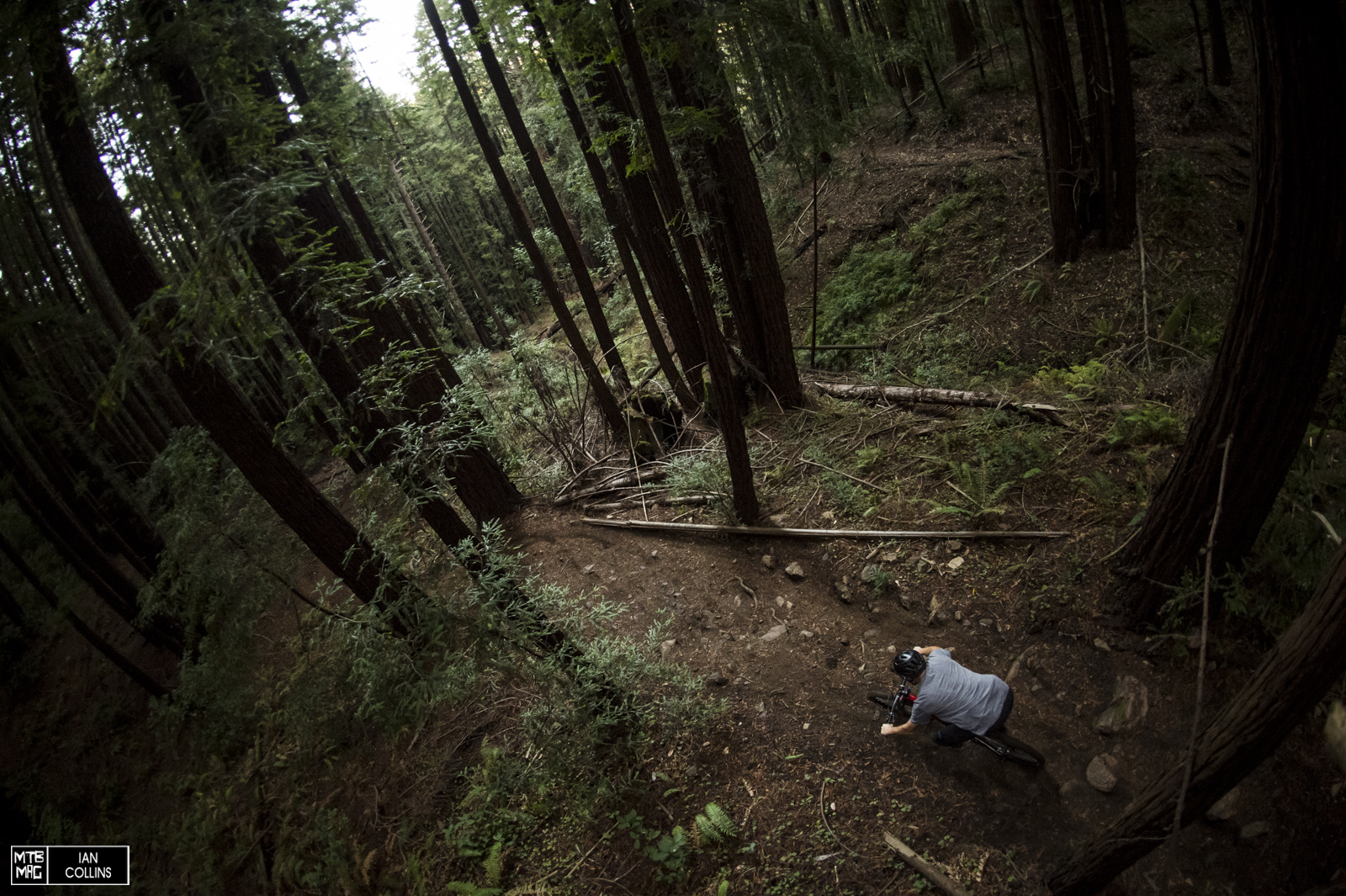 At $7999 this is an expensive bike but if there is one thing that you take away from this review it’s that we can’t even begin to emphasize how damn good its frame is. So, if this model is simply out of your price range, have a look at the Remedy 9 Race Shop Limited. It has all of the ingenius frame features but with an aluminum construction. It features a smart but more entry level spec and a price tag that’s $3500 less, providing incredible value. Getting back to the bike on test, in summary we would describe the Remedy 9.9 Race Shop Limited as playful, yet composed and absolutely ready for anything.
At $7999 this is an expensive bike but if there is one thing that you take away from this review it’s that we can’t even begin to emphasize how damn good its frame is. So, if this model is simply out of your price range, have a look at the Remedy 9 Race Shop Limited. It has all of the ingenius frame features but with an aluminum construction. It features a smart but more entry level spec and a price tag that’s $3500 less, providing incredible value. Getting back to the bike on test, in summary we would describe the Remedy 9.9 Race Shop Limited as playful, yet composed and absolutely ready for anything.

